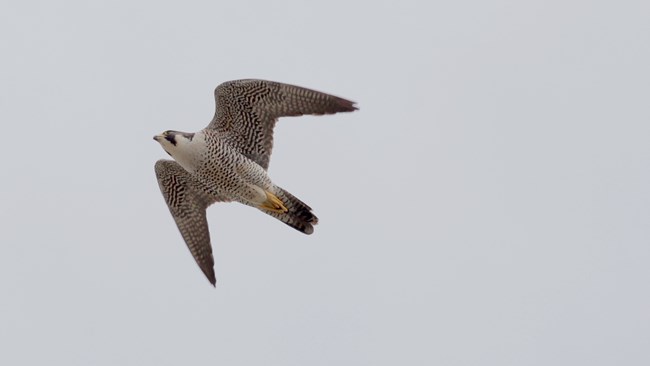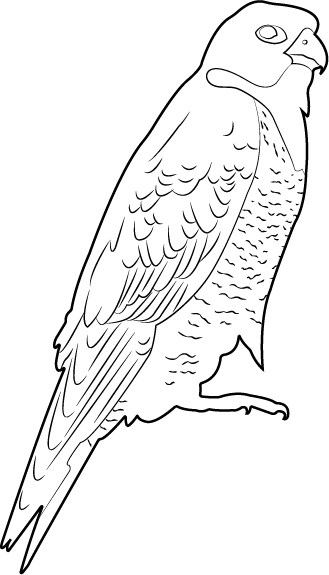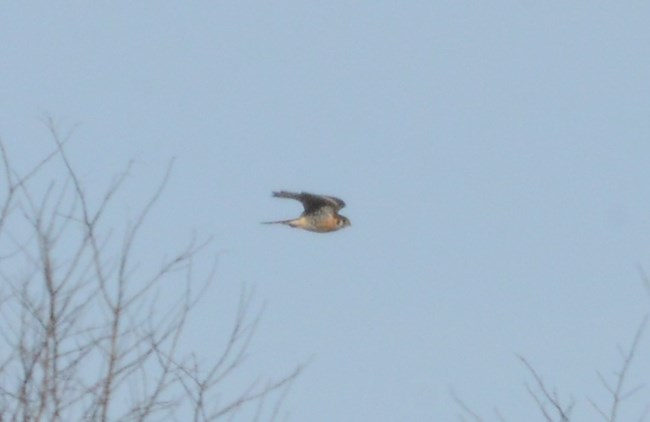|
NPS.gov / Park Home / Learn About the Park / Nature / Animals / Birds / Birds of Prey 
NPS Photo/Volunteer J. Kelly Peregrine Falcon (Falco peregrinus)• The Peregrine Falcon is a very strong flier and can fly at 67 mph when pursuing prey 
NPS/Intern Tristan Thomas Identification Information:• Size: Crow sized (Medium)• Color: Blue/gray on the top and on the head with a white belly with dark blue/gray markings 
© Bill Telfair American Kestrel (Falco sparverius)• American Kestrels love to eat insects, other invertebrates (lacking a backbone), small rodents, and other small birds. Some of their favorites include grasshoppers, cicadas, beetles, dragonflies, voles, mice, bats, and small songbirds.• When they have to use the bathroom, young kestrels back up, raise their tails, and squirt feces (poop) onto the walls of their nest cavity (cave like). Though this does get smelly the feces dries on the cavity walls and stays off the young kestrels. • Kestrels are one of the smallest birds of prey and though they are fierce they sometimes end up as prey for larger birds and sometimes snakes. • The cavities that American Kestrels nest in are usually old woodpecker holes, natural tree hollows, rock crevices, and nooks found in building or other man made structures. Identification Information• Size: Between a robin and a crow (Medium)• Color: American Kestrels are a light, rusty brown with black spots all over, they have a black band near the tip of their tail, and males have slate blue wings while females have reddish/brown wings. Both males and females have black slashes on their face that people refer to as mustaches or sideburns.
All of the above information is an abbreviated version of information gathered from the Cornell Lab of Ornithology. Please visit their website for more in-depth bird information.
|
Last updated: September 13, 2019
